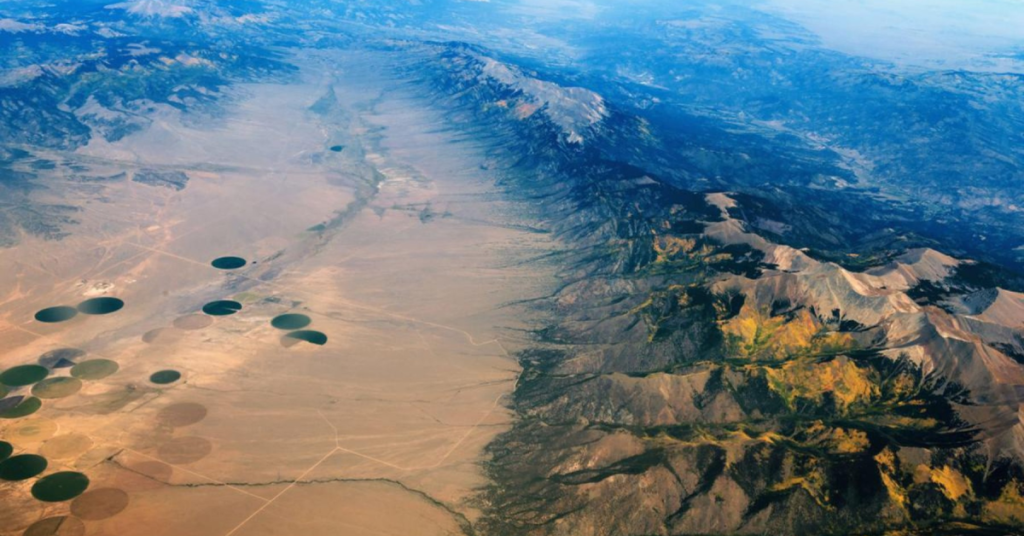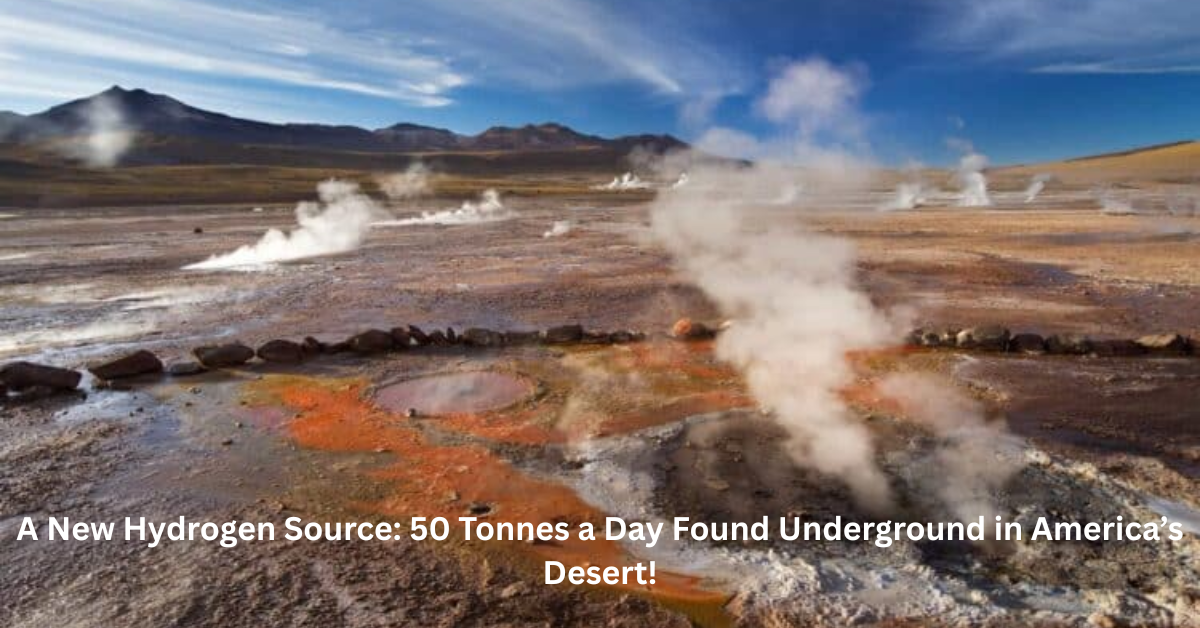The Mojave Desert, a sprawling stretch of dry, desolate land in California, has long been home to some of the most unique and extreme landscapes in the United States. However, beneath its harsh surface lies a surprising discovery that could potentially reshape the future of renewable energy, both in the U.S. and around the world.
Recent reports confirm that scientists and energy developers have uncovered vast underground hydrogen reserves in the Mojave, with the ability to produce 50 tonnes of hydrogen per day. This breakthrough has major implications for the future of green energy, offering a potential solution to reduce America’s carbon footprint while providing a cleaner alternative to fossil fuels.
The Mojave Desert: America’s Hydrogen Superpower in the Making
Hydrogen, especially green hydrogen, is widely regarded as a crucial component in the transition to clean, renewable energy. Unlike traditional fuels, green hydrogen is produced using renewable energy sources, and its only byproduct is water, making it an incredibly clean fuel. For decades, hydrogen has been touted as the future of clean energy, particularly in industries such as energy production and transportation. With this discovery of underground hydrogen reserves, California stands to become a significant player in the development of green hydrogen as a global energy source.
The Spanish solar developer, RIC Energy, is at the forefront of tapping into one of the most promising green energy initiatives in the U.S. The company’s ambition to turn the Mojave Desert into a hydrogen powerhouse aligns with the state’s broader goals of reducing carbon emissions and promoting sustainable energy solutions. By extracting hydrogen from the ground, RIC Energy could harness an abundant resource that has been hidden for millennia. With an estimated 50 tonnes of hydrogen production per day, the implications of this discovery are enormous.
For context, producing 50 tonnes per day could provide enough hydrogen to power thousands of homes, commercial buildings, and even vehicles. With the transportation sector being a significant contributor to greenhouse gas emissions, hydrogen-powered vehicles could become an essential tool in reducing the nation’s reliance on fossil fuels. If this project is successful, it could dramatically reduce the U.S.’s carbon footprint, setting a global example for renewable energy solutions.
Green Hydrogen: The Future of Clean Energy
Green hydrogen is considered one of the most promising solutions for decarbonising various sectors, including heavy industries and transportation. While hydrogen itself is not a new concept, the green variant is viewed as a breakthrough because it eliminates the carbon emissions typically associated with hydrogen production. The key to green hydrogen lies in its creation process, which involves splitting water into hydrogen and oxygen through a process known as electrolysis, powered by renewable energy sources like solar or wind power.

California, with its vast solar resources, is well-positioned to capitalise on green hydrogen production. The state has already made significant strides in adopting renewable energy technologies, with wind and solar farms playing a crucial role in its energy mix. By adding green hydrogen to the equation, California could further solidify its position as a leader in the renewable energy sector.
Hydrogen has already begun to gain traction in industries such as automotive manufacturing. Major car manufacturers have been developing hydrogen fuel cell vehicles, which offer a zero-emission alternative to gasoline-powered cars. With the potential to produce 50 tonnes of green hydrogen daily, the Mojave Desert could become a central hub for fueling these vehicles and expanding the adoption of hydrogen-powered transportation.
The Mojave’s Potential: A Game Changer for Global Energy
The discovery of hydrogen reserves in the Mojave Desert could also have international implications. As global efforts to combat climate change intensify, countries that are still heavily reliant on fossil fuels are seeking cleaner energy alternatives. The U.S. could position itself as a global leader in hydrogen production, supplying energy to nations that are struggling to reduce their carbon emissions. If the Mojave project proves successful, it could spark a wave of similar initiatives in other parts of the world, further accelerating the shift to clean energy.
Moreover, the Mojave Desert’s location offers a strategic advantage for hydrogen production and distribution. California’s proximity to international shipping routes and its established infrastructure make it a prime location for exporting hydrogen to other countries. This potential for global energy trade could not only provide economic benefits to the U.S. but also help other nations reduce their dependence on fossil fuels.
Greenwashing or Green Hydrogen? The Debate Heats Up
Despite the enthusiasm surrounding the Mojave Desert hydrogen initiative, concerns have been raised about its potential environmental impact. Some environmentalists and experts argue that the extraction process could put a strain on the region’s already limited water resources. The Mojave Desert is one of the driest places in North America, and any large-scale water usage could lead to unintended consequences for the local ecosystem.
In an article published by The Los Angeles Times, climate columnist Sammy Roth raised concerns about the water consumption required to extract hydrogen from the ground. While proponents of the project argue that the extraction process will be carefully managed, the reality is that water is a scarce resource in the desert. Critics worry that the project could exacerbate existing water scarcity issues, especially as the region faces increasing demands due to climate change.
These concerns have led some to question whether the term “green” is an accurate description of the project. If the environmental costs of hydrogen extraction are not properly managed, the project could end up being more harmful than beneficial. For many, the idea of “green hydrogen” could quickly turn into a case of greenwashing, where the environmental benefits are overstated, and the true costs are downplayed.
While these concerns are valid, the project’s supporters argue that the long-term benefits of clean energy outweigh the potential risks. They believe that with proper oversight and careful management, the project can be a model for sustainable hydrogen production in arid regions. The success of the Mojave project could ultimately set a precedent for similar initiatives in other parts of the world, provided the environmental impact is carefully monitored.
The Mojave’s Hydrogen Dream: A Delicate Balance
Despite the challenges, there is hope that the Mojave Desert hydrogen initiative can succeed. Success will depend not only on technological innovation but also on responsible resource management and transparent communication with the public. Critics argue that the project could turn into another well-intentioned failure if it is not handled carefully, but those involved in the initiative are committed to ensuring that the project is sustainable and beneficial for both California and the world.
Cadiz, the company behind the project, is relatively new but has been given access to a prime location for hydrogen production. With federal funding of about $1.2 billion from the U.S. government, the project has the financial backing it needs to move forward. If managed properly, this project could be the catalyst for a new era of clean energy in California, providing a model for other regions to follow.
However, the Mojave Desert’s hydrogen dream remains on thin ice. The success of the project will depend on careful planning and execution. If the project can meet its sustainability goals and minimize its environmental impact, it could become a landmark achievement in the global transition to renewable energy. But if it falls short, it could serve as a cautionary tale for future green energy projects.
Conclusion: The Future of Hydrogen Energy
The discovery of hydrogen reserves in the Mojave Desert is an exciting development that could transform California into a global leader in green hydrogen production. With the potential to produce 50 tonnes of hydrogen per day, the project offers a sustainable energy source that could help reduce the U.S. carbon footprint and contribute to the global fight against climate change. However, the environmental concerns surrounding the project must be addressed carefully to ensure that it remains truly green.
If the Mojave project succeeds, it could open the door to a new era of clean energy, providing a blueprint for future hydrogen production around the world. But for now, the world is watching closely to see if California can turn its hydrogen dream into a sustainable reality.

Deepak Grover is a dedicated content writer at OTE News, specializing in government affairs, public policy, and current events. With a keen eye for detail and a passion for factual reporting, he ensures readers receive accurate and insightful news. Deepak holds a degree in Political Science and has experience in research-driven journalism.
When not writing, he enjoys reading historical books, exploring hiking trails, and staying updated with global political trends. His commitment to ethical journalism makes him a trusted voice at OTE News.




